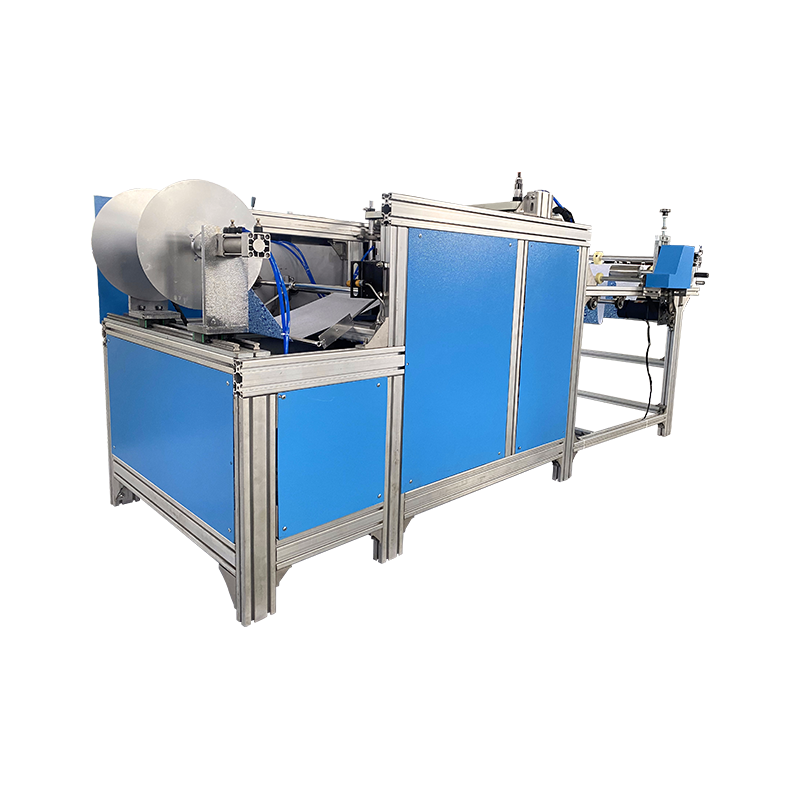Request A Quote

Ultrasonic towel cutting machines are designed to handle a variety of towel thicknesses and textures by utilizing high-frequency sound waves that create localized heat at the cutting surface. This allows the machines to adapt to different materials and fabric properties effectively. Here’s how ultrasonic towel cutting machines handle various towel thicknesses and textures:
1. Adaptation to Different Thicknesses
Fine and Thin Towels: For thin towels, such as lightweight cotton towels, ultrasonic cutting machines can provide clean cuts without excessive heat buildup or fabric distortion. The high-frequency vibrations of the ultrasonic waves create enough heat to seal the edges of the towel fabric, preventing fraying or unraveling without damaging delicate fibers.
Thicker Towels: Ultrasonic cutting machines can also handle thicker towels, such as heavy-duty terry cloth or bath towels. The key to cutting thicker fabrics is adjusting the power output and frequency of the ultrasonic waves. Higher power levels and appropriate adjustments in vibration intensity allow the ultrasonic waves to penetrate and cut through thicker fabrics efficiently, ensuring that the edges remain sealed and precise.
Thickness Range: The machine may feature adjustable parameters such as cutting speed, amplitude, and power to optimize performance based on the thickness of the fabric. For example, thicker towels might require a slower cutting speed or more energy to ensure clean cuts.
2. Handling Different Textures
Soft and Plush Fabrics: For soft and plush fabrics, such as microfiber or terry cloth, ultrasonic cutting machines can handle the pile structure without pulling or distorting the fabric. The ultrasonic vibrations help melt and bond the fibers at the cutting edge, creating smooth, sealed edges. The heat generated at the cutting point allows the fibers to fuse together, reducing the risk of fraying or unraveling that could occur with mechanical cutting methods.
Smooth Fabrics: For smoother fabrics like cotton towels with less texture, ultrasonic cutting ensures precise, clean edges without the need for additional finishing steps, such as trimming or hemming. The absence of physical blade contact reduces the chance of fabric shifting or curling during the cutting process.
Heavy Textured Fabrics: When cutting towels with a heavier texture or high pile (e.g., thick, highly absorbent terry cloth), ultrasonic cutting is advantageous because the localized heat allows the machine to cut without causing the fabric to bunch up or become misaligned. The ultrasonic process helps maintain the structure of the towel, even with a more textured surface, while still producing clean, sealed edges.
3. Customization for Different Materials
Fiber Type: Ultrasonic cutting machines can be tuned to handle various fiber types such as cotton, polyester, or blends. Different fibers respond to ultrasonic waves in unique ways, so manufacturers can adjust the frequency, power, and cutting speed of the machine to suit the material being cut. For instance, synthetic fabrics may require higher power levels due to their denser structure, whereas natural fibers like cotton may need slightly lower power to prevent excessive heat buildup.
Pile and Weave Structures: Towels with a pile weave (such as terry cloth) present a different challenge compared to smooth-woven fabrics. The ultrasonic cutting process can handle the pile by cutting through the fabric and simultaneously bonding the pile fibers at the edge. This is beneficial for towels, as it prevents loose fibers from pulling out and preserves the integrity of the weave.

4. Edge Quality and Finish
Sealing Edges: Ultrasonic cutting machines are particularly effective at producing sealed edges on both thin and thick towels, regardless of texture. This prevents fraying, which is a common issue with traditional cutting methods. The ultrasonic waves generate localized heat that melts and seals the fabric fibers at the edge, creating a clean, smooth finish that is highly durable.
No Fraying or Unraveling: Since ultrasonic cutting melts the fabric at the cutting point, there is no need for additional sealing, trimming, or hemming. The cut edges are fused together, preventing any fraying, even in towels with intricate textures or multiple fiber layers.
5. Cutting Precision
Complex Cuts: Ultrasonic cutting machines are highly precise, which is particularly useful for cutting complex shapes or custom patterns in towels. The ability to make detailed cuts without distorting the fabric structure is important when cutting towels that need to have consistent dimensions or specific design features. This precision also allows for the creation of custom-sized towels or specialized towel shapes with smooth, sealed edges.
Reduced Distortion: Ultrasonic cutting reduces the risk of fabric distortion, which can happen with mechanical cutters that might pull or drag the fabric during the cutting process. The ultrasonic method allows for consistent edge quality without the fabric stretching, warping, or puckering, even when dealing with textured towels.
6. Adjustability and Versatility
Settings for Different Fabrics: Many ultrasonic towel cutting machines come with adjustable settings that allow operators to fine-tune the cutting process based on the thickness and texture of the fabric. The amplitude, frequency, and power can be customized to suit the specific needs of different towel materials, ensuring the machine delivers the optimal cutting performance.
Automatic Adaptation: Some advanced ultrasonic cutting systems are equipped with sensors or software that automatically adjust the cutting parameters based on the type of fabric being processed. This adaptability further enhances the versatility of the machine in handling towels of various thicknesses and textures.
7. Reduction of Manual Intervention
Fewer Adjustments: Traditional mechanical cutting methods often require manual adjustments to accommodate different towel textures and thicknesses, such as changing blades or adjusting cutting speeds. With ultrasonic cutting, these adjustments are often automated, reducing the need for manual intervention and ensuring consistent cutting performance across different towel types and thicknesses.
Copyright © ChangZhou AoHeng Machinery Co., Ltd. All Rights Reserved

 English
English 中文简体
中文简体 русский
русский Español
Español